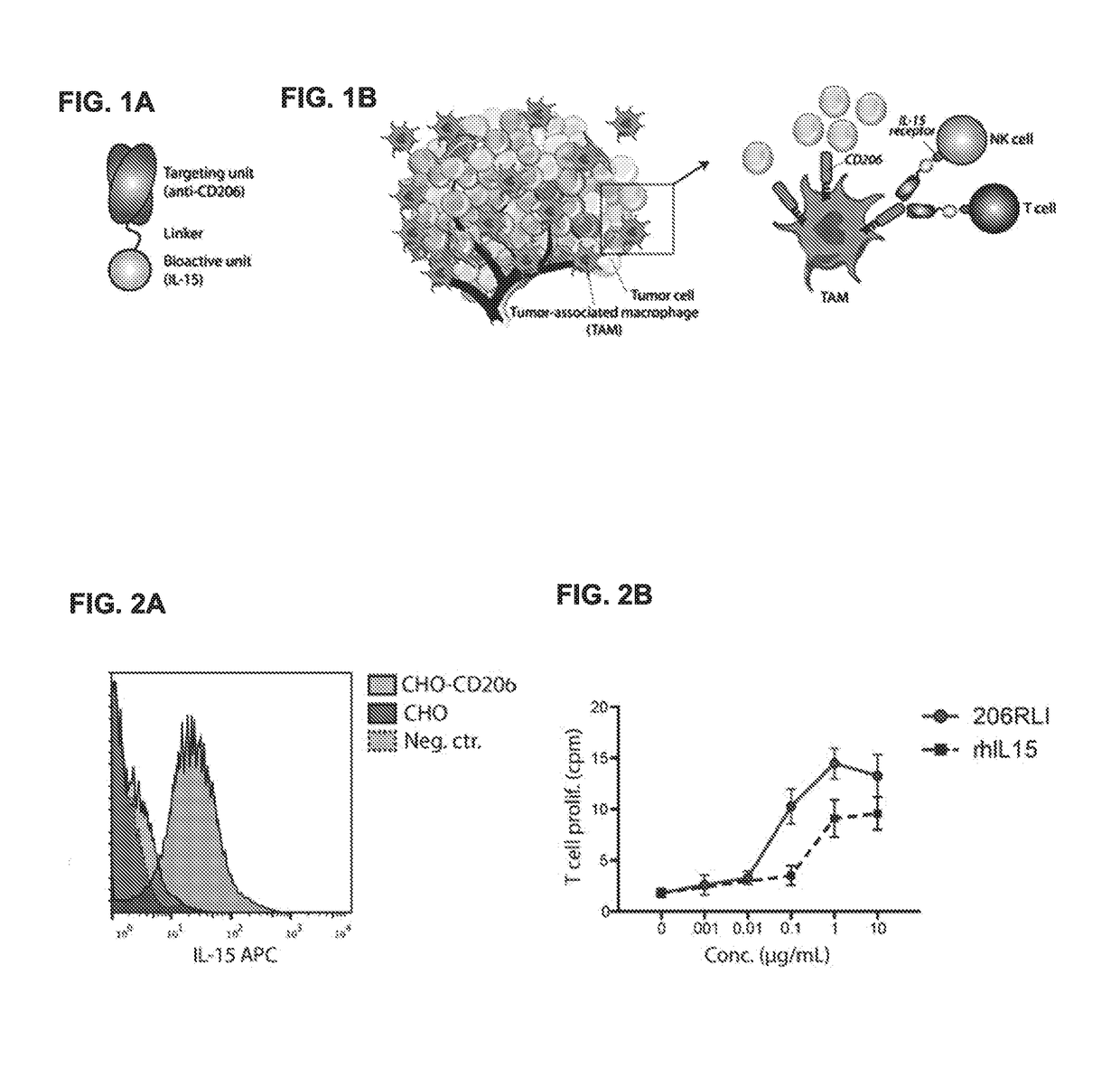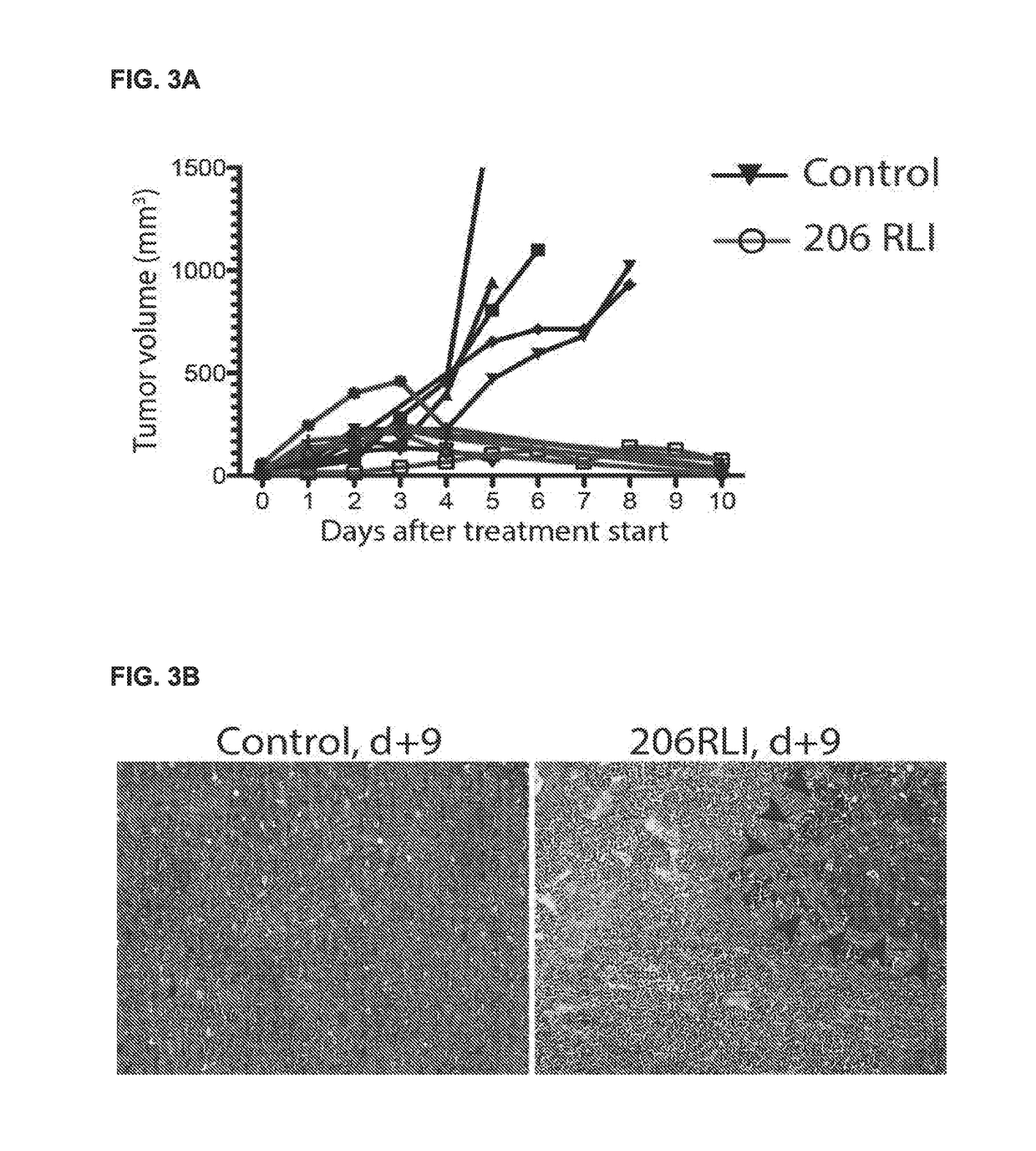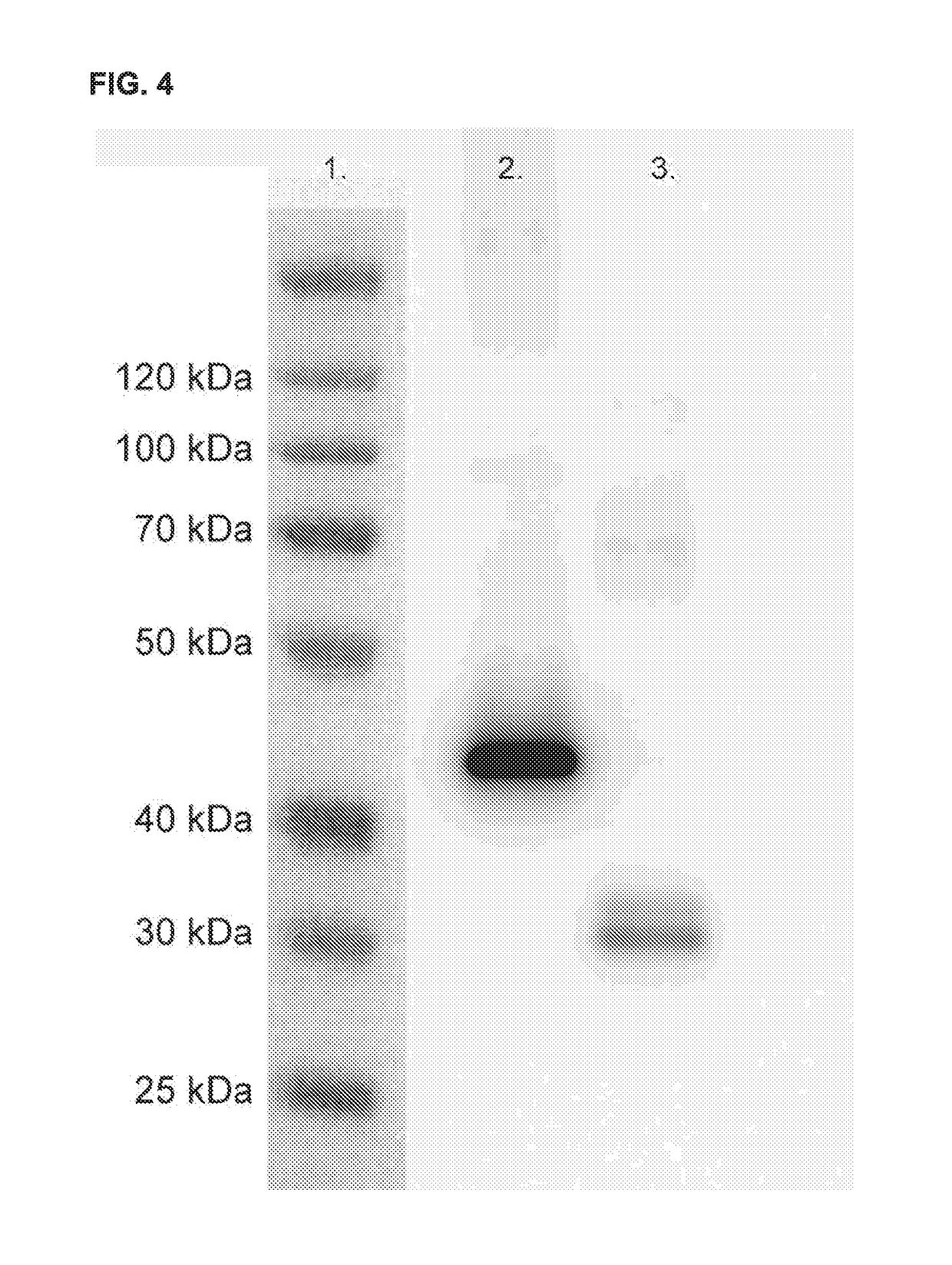Fusion proteins targeting tumour associated macrophages for treating cancer
a cancer and macrophage technology, applied in the field of cancer immunotherapy, can solve the problems of poor prognosis, difficult safety profile of checkpoint inhibitors, and insufficient response of 10-30% of patients, and achieve the effect of rapid and easy identification of monoclonal fab fragments
- Summary
- Abstract
- Description
- Claims
- Application Information
AI Technical Summary
Benefits of technology
Problems solved by technology
Method used
Image
Examples
example 1
n of Nanobodies and Constructs
[0228]Reagents, mice and cell lines. Recombinant human IL-15 (rIL-15), human IL-2 (rhlL-2), murine IL-4 (rmIL-4) and murine interferon gamma (rmIFNg) were purchased from Peprotech Inc (Rocky Hill, N.J.). The IL-2-dependent CTLL-2 cell line (American Type Culture Collection, ATCC) was maintained in RPMI1640 medium containing 10% FCS, 2 mM glutamine, 10 ng / ml rhIL-2.
[0229]C57B16 mice were obtained from Taconic (Taconic Farms, Rye, Denmark) and bred in-house in a Specific-pathogen-free (SPF) facility. Tumor challenge was performed by s.c. injection with 2×105 B16 melanoma cells (ATCC).
[0230]The CHO cell line (ATCC) was used to generate cells expressing the murine or human mannose receptor (MRC1; CD206). STable transfectants were generated by electorporating the cells with a pCDNA3.1 plasmid containing the relevant cDNA (synthesized by Genscript). MRC1-expressing cells were selected by flow sorting of cells staining positive using an anti-MRC1 antibody.
[023...
example 2
periments
[0266]Well-established, clinically relevant murine models of various malignancies are used to evaluate the treatment efficacy of 206RLI. We have selected a screening panel of cancer types that are known to have a high degree of macrophage infiltration, and which represents patient groups with limited current therapeutic options. This includes lung cancer, breast cancer, pancreatic cancer, prostate cancer, melanoma and multiple myeloma. The cell lines utilized are commonly used and well-characterized, produce tumors with consistent growth kinetics, and are used to model advanced-stage, metastatic disease.
[0267]Therapy evaluation is performed using both subcutaneous and disseminated tumors. For melanoma and multiple myeloma, we have previously assessed the outcome of treatment with current standard-of-care regimens, and of monotherapy with checkpoint inhibitors including anti-PDL1 and anti-CTLA4. This will greatly facilitate evaluation of 206RLI as an adjunct to other treatme...
PUM
| Property | Measurement | Unit |
|---|---|---|
| resistance | aaaaa | aaaaa |
| mass | aaaaa | aaaaa |
| heterogeneous | aaaaa | aaaaa |
Abstract
Description
Claims
Application Information
 Login to View More
Login to View More - R&D
- Intellectual Property
- Life Sciences
- Materials
- Tech Scout
- Unparalleled Data Quality
- Higher Quality Content
- 60% Fewer Hallucinations
Browse by: Latest US Patents, China's latest patents, Technical Efficacy Thesaurus, Application Domain, Technology Topic, Popular Technical Reports.
© 2025 PatSnap. All rights reserved.Legal|Privacy policy|Modern Slavery Act Transparency Statement|Sitemap|About US| Contact US: help@patsnap.com



